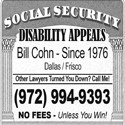(American Heart Association) Sixty seconds can make or break the outcome of a hospital “code blue” or cardiac arrest response. New research found a hospital code response team rushing to a patient in cardiac arrest may arrive at least one minute quicker and may also lead to better patient outcomes with the use of a smartphone emergency code notification system that activates the team through text messages. The findings are preliminary research to be presented at the American Heart Association’s Resuscitation Science Symposium 2022.
Cardiac arrest is a condition in which the heart’s electrical system malfunctions and stops beating. Previous studies looking at ways to reduce the rate of in-hospital cardiac arrest have focused on earlier treatment, including defibrillation and epinephrine administration to improve patient outcomes.
Most hospitals have a code team consisting of specifically trained health professionals who resuscitate patients in cardiac arrest. Activating the code team starts when a call comes into the hospital operator, who sends out a page to the code team, and a hospital-wide overhead page sometimes calls a “code blue.” A delay often occurs from the time someone recognizes a patient has no pulse until team members receive the code blue page. Code team members typically are different from the medical team primarily caring for the patient, and they may not know the patient or have information about their health conditions or treatments.
In this study, researchers at the University of Maryland Medical Center in Baltimore explored how to improve outcomes and target patient treatments by accelerating notification of the code care team. They electronically mapped code blue buttons present behind each bed to a secure smartphone texting system that also connected with the hospital’s electronic medical records. Pressing the button sent important patient data, such as the admitting diagnosis and laboratory details, to code team members’ smartphones. At the same time, the code blue button contacted the hospital operator who activated the code team through traditional methods, including overhead pages and pager alerts.

Researchers then compared differences in the smart phone text message activation to the more traditional overhead page announcement of the code and how long it took with each method to administer epinephrine to the patient and the rate of patient survival to hospital discharge.
In this analysis of 35 cardiac arrest events during a three-year period, from November 2019 to May 2022, using the smartphone notification system, the code team activations were nearly instantaneous with notifications coming through immediately via text message. Conventional methods of code team activation took an average of 78 seconds, meaning the smartphone activation cut notification by over one minute.
“Our study shows that technology may be used to speed up our communication processes and that innovations to improve our systems of care are still possible,” said the study’s lead author Cody Couperus, M.D., a resident physician in the emergency medicine and internal medicine program at University of Maryland Medical Center in Baltimore.
“Improving the notification processes can get code teams to the patient faster, equipped with knowledge about the patient that may lead to targeted treatments that more efficiently revive the patient,” he said. “Time is of the essence, and the sooner a patient is treated for an underlying cause, the more likely they are to survive without serious brain injury. In the future, we hope to show that code teams arrive faster using this smartphone code blue notification system and that more patients survive without severe brain injury.”
“Health care professionals need to be strong advocates for quality initiatives to improve the rapid resuscitation of patients experiencing cardiac arrest in our hospitals,” Couperus said. “Outcomes following loss of pulse in the hospital have remained largely stable and poor over the years, and these results indicate technological innovations might help us do better.”
Other results included:
• The smartphone code blue notification was the primary mode of code team activation for more than one-third of the cardiac arrest events during the 3-year study period.
• The average time to documented epinephrine administration for notifications was 3 minutes after the code team arrival with the smartphone activation vs. 4 minutes with the standard notification system.
• Survival to hospital discharge was 25% for the cardiac arrest events for notifications activated with the smartphone activation, compared to around 17% when the code team was activated by the standard notification system.
Co-authors are Zach Dezman, M.D.; Rebekah Friedrich, M.S., R.N., C.C.R.N., C.P.P.S.; Samuel Gurmu, B.S.; Dan Lemkin, M.D.; and Nicholas Morris, M.D. Authors’ disclosures are listed in the abstract.
The American Heart Association is a relentless force for a world of longer, healthier lives. We are dedicated to ensuring equitable health in all communities. Through collaboration with numerous organizations, and powered by millions of volunteers, we fund innovative research, advocate for the public’s health and share lifesaving resources. The Dallas-based organization has been a leading source of health information for nearly a century. Connect with us on heart.org, Facebook, Twitter or by calling 1-800-AHA-USA1.








